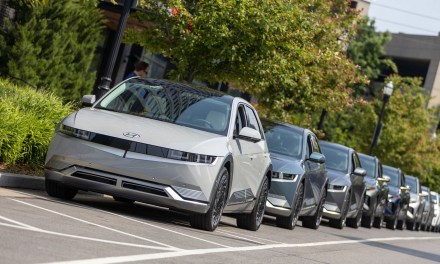In a surprising turn of events, the White House has dampened the spirits of Tesla following its recent triumph in establishing its connector, NACS, as the charging standard in North America. The government, while acknowledging the significance of Tesla’s achievement, has expressed the need for the inclusion of some CCS connectors in order to receive funding.
After Ford and GM declared their intentions to adopt NACS as the new connector for their upcoming electric vehicles, Tesla’s connector rapidly gained recognition as the de facto standard in North America. Both GM CEO Mary Barra and Tesla CEO Elon Musk concurred on this front during their announcement.
The effect of this decision has been likened to a domino effect, as various charging station manufacturers promptly pledged to offer their stations with NACS connectors, with more automakers expected to follow suit. However, one prominent entity remains somewhat skeptical about fully embracing this new development: the White House.
In a statement by White House spokesperson Robyn Patterson, she highlighted the government’s position on NACS in recent weeks, stating,
“Earlier this year, we developed minimum standards to ensure publicly funded EV charging is accessible, reliable, and affordable for all drivers, and we required interoperability to promote competition. Those standards give flexibility for adding both CCS and NACS, as long as drivers can count on a minimum of CCS.”
This indicates that the White House is not ready to let CCS (Combined Charging System) fade into oblivion just yet. It demands that charging stations incorporate a “minimum of CCS” to be eligible for federal funding. The federal government has allocated a significant sum of $7.5 billion to advance electric vehicle charging infrastructure across the United States.
Advocates argue that the focus should be on providing the best possible experience for all electric vehicle owners to encourage broader adoption. Even with the rise of NACS, CCS EV owners will not face a diminished experience as they will still have access to compatible charging stations. In fact, Tesla plans to offer an adapter for EV owners with CCS plugs, ensuring greater convenience and accessibility.
The primary objective of establishing NACS as the standard is to streamline the EV experience and enhance efficiency for future electric vehicles, as the market experiences a surge in demand. By adopting a unified standard, the industry aims to ensure seamless interoperability when electric vehicle volumes increase significantly.
Conclusion
While Tesla’s NACS victory initially appeared to be a game-changer in the charging infrastructure landscape, the White House’s cautious stance reveals the complexity of implementing a standardized system. Balancing the interests of multiple stakeholders, including automakers, charging station manufacturers, and federal agencies, remains a challenging task. As the EV market continues to evolve, it is essential to strike a delicate balance between innovation, accessibility, and competition to drive the widespread adoption of electric vehicles across North America.






